Formula feeding schedule 3 month old baby
3- and 4-month-old feeding schedules
- Community
- Getting Pregnant
- Pregnancy
- Baby names
- Baby
- Toddler
- Child
- Health
- Family
- Courses
- Registry Builder
- Baby Products
Advertisement
At 3 and 4 months old, babies are still eating frequently throughout the day but are capable of going for longer stretches at night. Breastfeeding parents can expect their baby to continue to eat often, anywhere from eight to 12 times a day. If you're formula-feeding your little one, they'll be ready for 4- to 6-ounces bottles six to eight times a day. As your baby grows out of the newborn stage, you may notice them starting to develop a more predictable schedule for feeding, sleep, and play.
Photo credit: iStock.com / Hiraman
At 3 and 4 months old, your baby may be naturally falling into a schedule. You can encourage them by adding more consistency to their days. Keep their naptimes, mealtimes, and bedtime routine about the same from day to day. Babies are awake and alert more now, making it a good time to start getting them on a more predictable schedule.
It can be a big help to see what other moms and dads are doing. Below, you'll find several sample schedules based on those of real parents and reviewed by a pediatrician on our Medical Advisory Board.
As you're creating a schedule for your baby, here are a few things to keep in mind:
- The schedule for a formula-fed baby may look different than the schedule for a breastfed baby. At 3 to 4 months old, your formula-fed baby will have around 32 ounces of formula each day over five to eight feedings of 4 to 6 ounces each. (See whether your baby is getting enough formula.)
- If you're breastfeeding, your baby will eat five to eight times a day, every two or three hours. (Here's how to tell whether your baby is getting enough breast milk.)
- By focusing on longer feedings every three to four hours during the day, you can start encouraging your baby to sleep for longer stretches at night.
 Babies can go through the night without a feeding as early as 3 months, but it more commonly happens later, around 5 or 6 months
Babies can go through the night without a feeding as early as 3 months, but it more commonly happens later, around 5 or 6 months
Sample 3-month-old feeding schedule
7 a.m.: Nurse.
8 a.m.: Daycare drop off; playtime.
9:45 a.m.: 4 ounces of expressed breast milk.
10 a.m.: Naptime. (Mom pumps at work.)
12 p.m.: Playtime.
Advertisement | page continues below
12:45 p.m.: 4 ounces of expressed breast milk.
1:30 p.m.: Naptime. (Mom pumps again.)
2:30 p.m.: Playtime.
4 p.m.: 4 ounces of expressed breast milk. (Mom pumps again.)
4:30 p.m.: Naptime.
5:15 p.m.: Daycare pickup.
5:45 p.m.: Playtime.
6:30 p.m.: Nurse.
6:45 p.m.: Playtime and tummy time.
7:30 p. m.: Nurse, then bedtime routine.
m.: Nurse, then bedtime routine.
12 a.m.: Nurse.
4 a.m.: Nurse.
Sample 4-month-old feeding schedule
5 a.m.: Nurse, then back to sleep.
7 a.m.: Nurse and back to sleep again.
9 a.m.: Wake up.
10 a.m.: Nurse, then tummy time and playtime.
12 p.m.: Naptime.
2 p.m.: Nurse.
2:30 p.m.: A walk in the stroller.
3 p.m.: Short nap.
4 p.m.: Nurse.
5 p.m.: Playtime.
7 p.m.: Bedtime routine – bath, read a few books and sing a lullaby.
7:30 p.m.: Nurse and bedtime.
1 a.m.: Nurse, then back to bed.
Tips for feeding your 3- or 4-month-old
You may be breastfeeding exclusively, pumping and breastfeeding, exclusively pumping, formula-feeding, or supplementing with formula.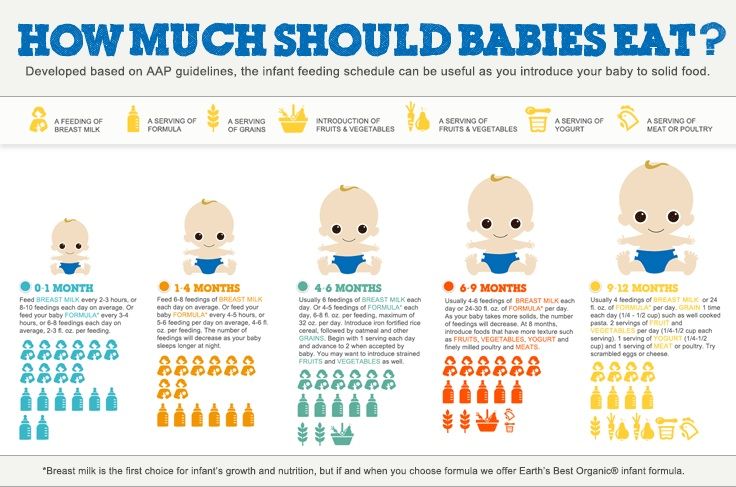 No matter how you're feeding your 3- to 4-month-old baby, here are some tips for helping it go smoothly.
No matter how you're feeding your 3- to 4-month-old baby, here are some tips for helping it go smoothly.
- If you're breastfeeding, continue to nurse or pump often to keep your milk supply up. Offer both breasts at each feeding to keep signaling to your body that it needs to make enough milk to keep up with your baby's hunger.
- It's hard to overfeed a breastfeeding baby, but at 3 to 4 months it's also okay to encourage them to go for slightly longer stretches between meals. By focusing on longer feedings, you can fill their belly and try to avoid your baby "snacking" all day long.
- Eat plenty of nutritious foods to keep yourself fueled for feeding your baby. Breastfeeding moms need more calories (450 to 500 extra calories each day), and dieting can decrease your milk supply.
- If your baby is nursing exclusively but you're ready to introduce a bottle, it can sometimes be a challenge. Here are some tips for giving your breastfed baby a bottle.
- If you're exclusively pumping and you notice a sudden drop in milk supply, try power pumping.
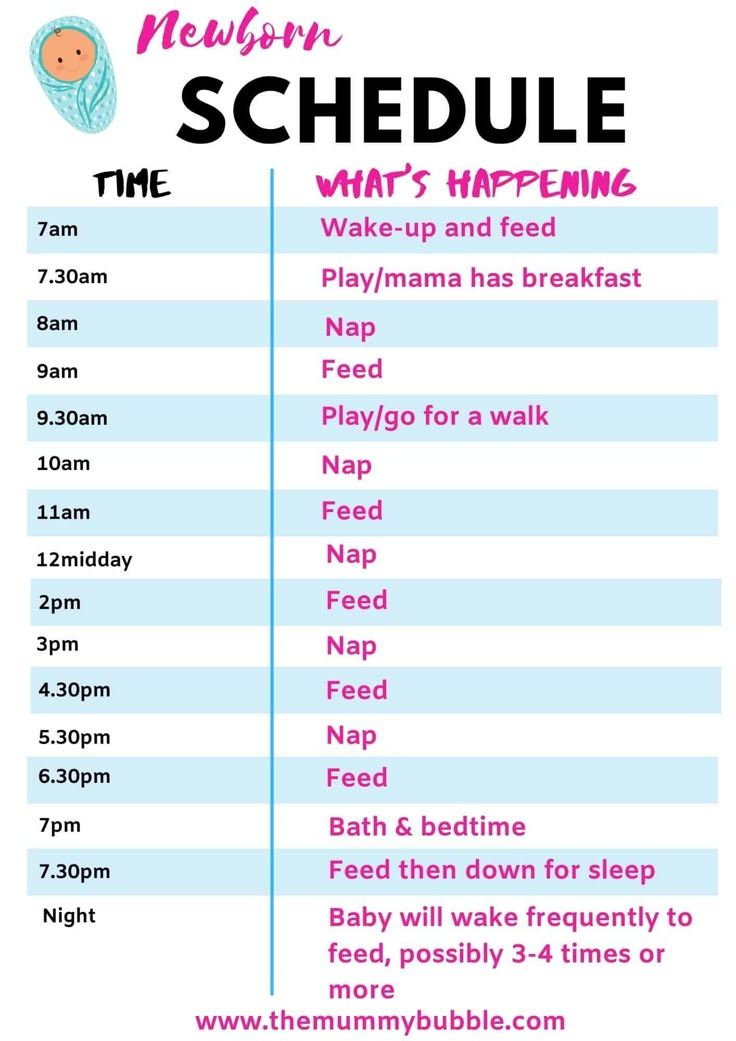 The idea is to pump frequently over an hour to increase supply. One commonly suggested power pumping schedule is pump for 20 minutes, rest for 10 minutes, pump for 10 minutes, rest for 10 minutes, pump for 10 minutes. You can power pump once or twice a day.
The idea is to pump frequently over an hour to increase supply. One commonly suggested power pumping schedule is pump for 20 minutes, rest for 10 minutes, pump for 10 minutes, rest for 10 minutes, pump for 10 minutes. You can power pump once or twice a day. - Practice paced bottle feeding if your baby is drinking formula or breast milk from a bottle. By feeding your baby in a more upright position and taking regular breaks to burp them, you allow them more control over how quickly and how much milk or formula they drink.
- Keep your bottle-fed baby safe from foodborne illness by practicing safe bottle feeding. Wash your bottles thoroughly between feedings and be sure you're storing formula safely. Expired or compromised formula can be dangerous for babies, so double-check the label before feeding your baby from a new container of formula.
Learn more:
- Your 3-month-old baby's growth and development
- Your 4-month-old baby's growth and development
- 3-month-old sleep guide
- 4-month-old sleep guide
- When can my baby start sleeping through the night?
Mary Sauer
Mary Sauer is a freelance parenting and health writer living in Kansas City. She is a mom of four and loves to hike with her kids, read, and knit. Cooking a complicated meal her kids probably won't eat is one of her favorite pastimes.
She is a mom of four and loves to hike with her kids, read, and knit. Cooking a complicated meal her kids probably won't eat is one of her favorite pastimes.
A Realistic 3-Month-Old Feeding Schedule and Sleeping Schedule
- Share
- Tweet
Congrats! You’re finally out of the newborn stage and hopefully, things are getting a bit easier by now! At this point, you may not have your baby on a set schedule, but you’ve established some daily routines and gotten to know each other pretty well. You’re probably wondering what a 3 month old baby schedule looks like.
Babies changes so much!
It takes some time for every parent to get to know their baby’s feeding pattern. The best way to achieve this is to spend quality time playing, snuggling, and of course, feeding your baby. Spending time with your little one will help you to establish a routine of how your baby will sleep, eat, and play.
Your 3-month-old baby is going through a lot at this age.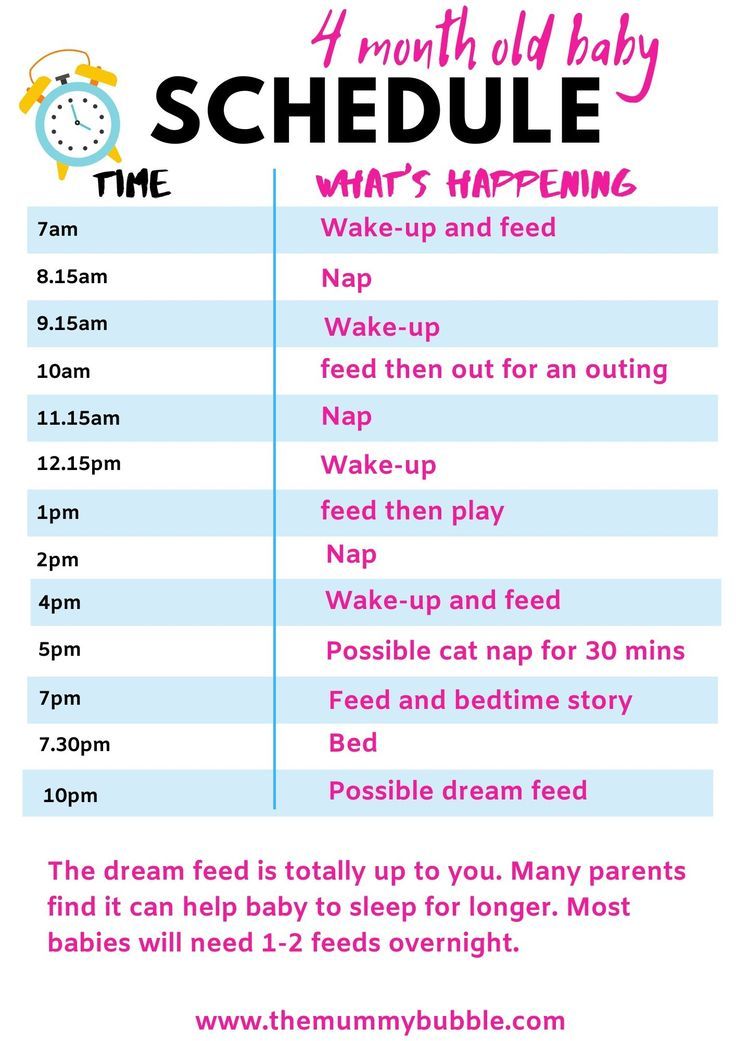 He will experience a growth spurt, so don’t be surprised if your baby wants to eat more than ever. Some babies start to sleep longer stretches at night.
He will experience a growth spurt, so don’t be surprised if your baby wants to eat more than ever. Some babies start to sleep longer stretches at night.
Some – not all!
Let’s look at everything you need to know about a 3 month old baby schedule.
How Much Sleep Does a 3 Month Old Baby Need?
There are significant differences between the sleep habits of a newborn and your now-3 month old.
At three months old, babies need around 11-12 hours of sleep per night and three to four hours of sleep throughout the day. Your goal is for your baby to get 14 to 16 hours of total sleep in in a 24-hour period.
Babies start to regulate their sleep a bit more at this stage.
This is the point when most babies are capable of dropping their late-evening feeding and begin sleeping 10-12 hours at night. Although sleeping that long of a stretch sounds like a dream, it’s definitely not true for all babies, however, it is possible!
Don’t worry if your baby is still waking up every two to three hours at night. This is quite normal!
This is quite normal!
This 10-12 hours of sleep may be interrupted by 1-2 feedings for some infants, while some may be able to stretch their sleep through that whole period.
Unfortunately, a lot of your sleep wins around this age go out the window when your baby turns four months. The 4 month old sleep regression is the most well-known and documented out of all the sleep regressions, so there is a good chance your baby will struggle slightly. Don’t worry; it doesn’t last forever.
Related: The Two-Year-Old Sleep Regression: What Causes It and How To Fix It
How Many Daytime Naps for a 3 Month Old?
Most three-month-old babies take between four to five naps per day. The length of these naps varies from quick, 30-minute short naps to long two-hour stretches.
Baby’s awake times are also significantly longer now (1-2 hours) so be sure to fill this time with tummy time and other stimulating activities for your baby. Make use of these wake windows by engaging your baby regularly, but don’t overstimulate too much!
Parents need to pay attention to their baby’s sleep cues and soothe them as soon as they indicate that they’re tired. The last thing you want is a baby that is overstimulated all day and missing nap time.
The last thing you want is a baby that is overstimulated all day and missing nap time.
That’s how you get into a bad sleep cycle.
Related Post: Top Must-Have Baby Toys for Development and Stimulation
Examples of a 3 Month Old Baby Schedule
Keep in mind that breastfeed babies need to eat more than formula-fed babies, so they often continue to wake up every three hours.
Here is an example of a 3 month old baby schedule.
- 7 AM: Wake up
- 9 AM: Nap for 1.5 Hour
- 12 PM: Nap for 1.5 Hour
- 3 PM: Nap for 1.5-2 Hour
- 6 PM: Nap for 1-1.5 Hour
- 8-8:30: Bedtime
- 11 PM: Wake to Feed
- 3 AM: Wake to Feed
- 5 AM: Wake to Feed
This is just one example. Remember, babies at this age stay awake for 1.5 to 2 hours, at most, so keep this in mind when creating a schedule for your baby.
Create a Bedtime Routine
If you haven’t yet, add a bedtime routine to your 3 month old baby schedule. A bedtime routine is an early precursor to sleep training without any tears. Your baby’s body will start to recognize the cues that it’s time to go to sleep.
A bedtime routine is an early precursor to sleep training without any tears. Your baby’s body will start to recognize the cues that it’s time to go to sleep.
Don’t make the bedtime routine complicated!
I always picked simple routines like bath time, pajamas, diaper change, a night feed, and a book. Make it simple so you can complete it quickly on those busy nights, but once you start a routine, you want to stick to it as much as possible!
FAQs about a 3 Month Old Baby Schedule for Sleeping
What Time Should A 3 Month Old Baby Go To Bed?
Around three months of age, we start to see a shift towards an earlier bedtime. Your newborn baby might have stayed up late with you, but as your baby gets older, they start to want to go down for the night earlier.
Plan for 12-14 hours of nighttime sleep, and in general, you shouldn’t put your baby down earlier than 6:00 PM. The ideal bedtime for a 3 month old baby is between 6:00 to 8:00 PM.
How Long Should My 3-Month-Old Be Awake?
The ideal wake window for a three month old infant is 60 to 120 minutes. So, that means they may go down for another nap only one hour after they woke up! However, you’ll also notice longer wake windows for your infant at this time.
So, that means they may go down for another nap only one hour after they woke up! However, you’ll also notice longer wake windows for your infant at this time.
The longer wake times mean your baby has more play time available throughout the day! Make sure you don’t do too much, leading to an overtired baby.
Can a 3-Month-Old Baby Sleep Through the Night?
There’s a lot of focus on sleeping through the night; parents want to sleep!
However, it’s also easy to start to stress out if your baby isn’t making that milestone when your friends’ babies are.
A recent study by the American Academy of Pediatrics found that up to 57% of six-month-old and 12-month-old infants didn’t sleep through the night.
So if your three-month-old isn’t sleeping long stretches, you’re in good company – like half of the parents in the United States. Don’t stress; your baby will sleep more when he’s ready for that.
Feeding Your 3 Month Old Baby
When it comes to feeding your 3-month old baby, you’ll notice that he or she will be consuming a lot more in one session compared to the first time you brought him or her home.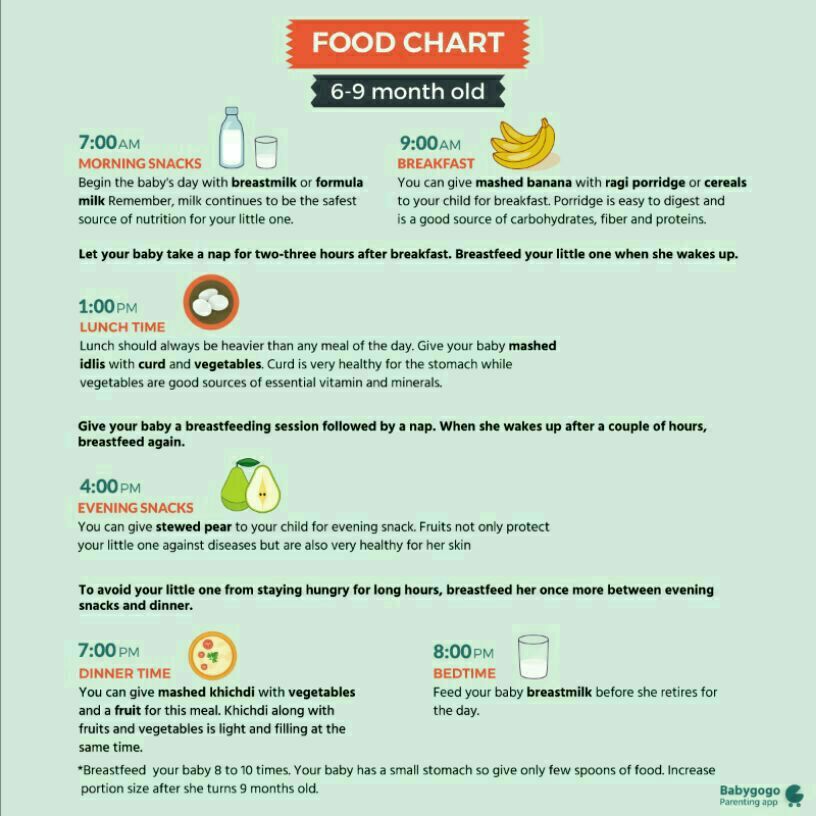 As your baby grows, their appetite will increase as well.
As your baby grows, their appetite will increase as well.
You may also realize that your 3-month old baby can feed more frequently during the daytime, which results in minimizing night feeds.
When they drop their late evening feeding, their feed-wake-sleep cycles are reduced to six. Try to keep the first-morning feeding at the same time and the last evening feeding will come around 10-12 hours before that first-morning feeding.
When you are creating a 3-month-old feeding schedule for a breastfed baby, you should be aware that:
- A breastfed baby will typically eat every two to three hours at this age; some might eat every four hours but that’s not common.
- Formula fed babies need 2 1/2 ounces formula for each pound of weight (approx. 20-30 ounces)
Typically, a breastfed baby will feed 7 to 9 times in 24 hours, and a formula-fed baby will eat 5 to 7 times per day.
A 3-month old baby is too young for solid food, so their primary source of nutrition will continue to be from breastmilk or formula at this point. There are myths circulating that solid food will help your baby sleep young, but don’t believe that. A 3-month-old baby will not gain any nutrition from solids, and it will not help them sleep any better.
There are myths circulating that solid food will help your baby sleep young, but don’t believe that. A 3-month-old baby will not gain any nutrition from solids, and it will not help them sleep any better.
Water is also not a significant source of nutrition and should not be given until your baby is eating solids.
I’d suggest that you try to always start and end your day with a feeding at the same time. You can then fit the remaining 4 feedings in between those in any schedule that you wish, not exceeding 3.5 hours between feedings.
Keep in mind that they’ll only be able to stay awake for about 1 to 2 hours before they need to sleep again. They may take up to 5 naps or three longer naps throughout the day in between these feedings.
Feeding Your Three-Month-Old Breastfed Baby
Breast milk is very easy to digest which gives your baby the need to feed more frequently. As mentioned above, a 3-month-old baby will feed every 2. 5 to 3 hours, which results in about six or more times per day.
5 to 3 hours, which results in about six or more times per day.
In fact, it’s not abnormal for three-month-old babies to nurse every two hours. Several of my babies nursed every two hours for over four months.
Your baby may not be feeding as long on the breast during each nursing session, and that is fine. They are getting more efficient at suckling, and it takes them much less time to consume more than they did before.
A healthy breastfed baby will show signs like a big suck and swallow at the breast. If your baby is producing a sufficient amount of wet and dirty diapers and having a typical amount of weight gain, that’s the best indicator that they are eating enough.
If you’re unable to breastfeed or choose not to, there are a lot of solutions besides just formula.
Example of a Three-Month-Old Feeding Schedule for a Breastfed Baby
It’s impossible to take a schedule off the internet, especially for a breastfed baby, and implement it. Some babies feed more often than others.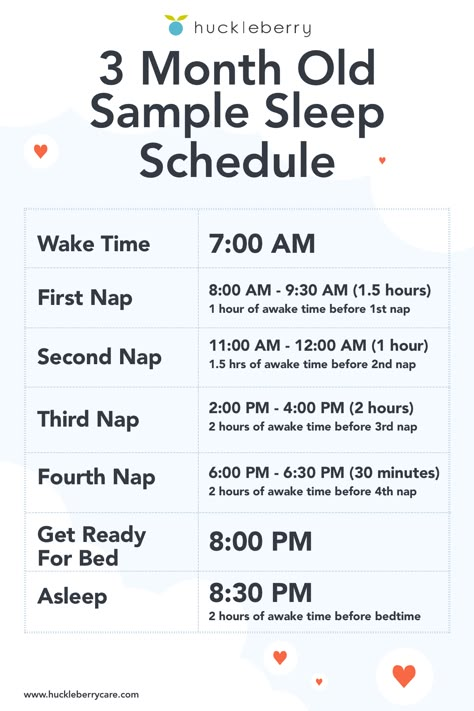
Remember, breastfed babies will feed every two to three hours at three months old.
Here are some sample schedules of what your 3-month-old feeding schedule might look like.
1. Early Morning: 6:30-7:00 a.m.
- Feeding
- Waketime: 50-90 minutes
- Down for a morning nap
2. Mid-Morning: 9-9:30 AM
- Feeding
- Waketime: 50-90 minutes
- Down for a nap
3. Early Afternoon: 11:30-12
- Feeding
- Waketime: 50-90 minutes
- Down for a nap
4. Mid-Afternoon: 2-2:30 PM
- Feeding
- Waketime: 50-90 minutes
- Down for a nap
5. Early Evening: 4:30-5 PM
- Feeding
- Waketime: 50-90 minutes
- Down for a cat nap
6. Late Evening: 7-730 PM
- Feeding
- Waketime: 50-90 minutes
- Down for a nap
7.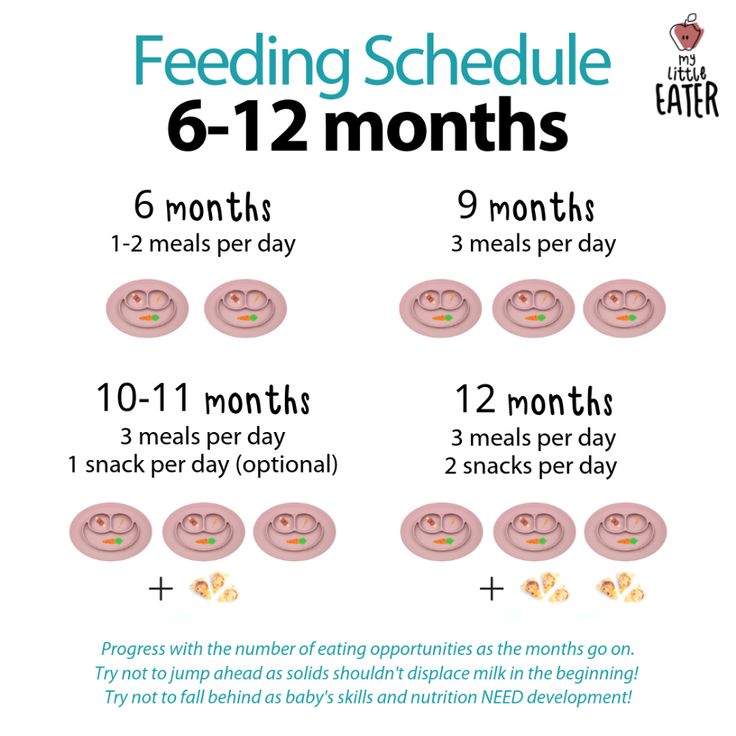 Bedtime: 9:30 p.m.
Bedtime: 9:30 p.m.
- Feeding
- Down for the night
Personalize the times to fit you and your baby’s needs.
Chances are your baby may continue to need a dream feed late at night before you head to bed and will still be waking in the middle of the night to feed as well, resulting in more feedings and milk consumption.
If your baby wakes to feed in the middle of the night, don’t take away a feeding during the day. You should still keep the daytime routine and schedule as consistent as possible.
Each baby is different and only you as the parent will understand your baby better than anyone.
Feeding Your Formula-Fed Breastfed Baby
It is much easier to tell how much milk your baby is consuming from a bottle rather than from the breast.
According to the American Academy of Pediatrics (AAP), a 3-month-old should take about 2 1/2 ounces of formula for each pound of weight (approx. 20-30 ounces) throughout the entire day.
However, that will vary based on how much your baby weighs!
This will be split up into around 5 feedings a day (every 4 hours), averaging anywhere from 4-6 ounces per feeding. Infants tend to consume more formula during each feeding and throughout the day because it takes a longer time to digest.
3 Month Old Feeding Schedule for Formula-Fed Babies
Wake and Feed: 7-7:30 AM
- Feeding
- Waketime: 50-90 minutes
- Down for a nap
2. Mid-morning: 9:30 a.m.
- Feeding
- Waketime: 50-90 minutes
- Down for a nap
3. Noontime: 12:30 p.m.
- Feeding
- Waketime: 50-90 minutes
- Down for a nap
4. Mid-afternoon: 3:30 p.m.
- Feeding
- Waketime: 50-90 minutes
- Down for a nap
5. Late Afternoon: 5:30-6:00 p.m.
- Feeding
- Waketime: 50-90 minutes
- Down for the last nap.

6. Evening: 8:30-9:00 p.m.
- Feeding
- Down for the night
Understand that just because your baby is formula-fed doesn’t mean night feedings aren’t still a thing. At three months old, it’s not unusual for babies to need one to two night feedings.
If you should have any concerns in regard to your baby’s intake or whether your baby is feeding effectively, the best indication is the amount of wet and dirty diapers. On average, a 3 month old baby should have a wet or dirty diaper at least 4 or 5 times a day.
Another good indication that your baby feeds appropriately is steady weight gain following along with their own individual growth chart.
I hope you can use this sample 3 month old feeding schedule to give your baby a consistent daily routine. Remember – your 3 month old baby schedule won’t look exactly like these sample schedules, and that’s okay!
For more helpful tips, check out 8 Rules You Must Follow for the Best Newborn Sleep
- Share
- Tweet
Scheme of the first feeding of a child (table) with artificial and breastfeeding, what can be given to a baby
The need for the introduction of complementary foods in modern mothers has long been beyond doubt. Pediatricians, pediatric nutritionists and other graduates unanimously say that at some point both mother's milk and formula are not enough to satisfy the growing needs of the child's body for useful trace elements and vitamins. That's when it's time to introduce complementary foods. The fact that your baby is ready to get new experiences and try tastes so far unknown to him is indicated by the presence of the following signs:
Pediatricians, pediatric nutritionists and other graduates unanimously say that at some point both mother's milk and formula are not enough to satisfy the growing needs of the child's body for useful trace elements and vitamins. That's when it's time to introduce complementary foods. The fact that your baby is ready to get new experiences and try tastes so far unknown to him is indicated by the presence of the following signs:
• doubling the initial weight of the child,
• ability to sit with support,
• child does not push food out of his mouth,
• curiosity and desire to try something from the common table.
Signs of malnutrition in a child, constant feeling of hunger and anxiety associated with it, weight loss can also be important signals for the start of complementary foods. In these cases, it is recommended to immediately contact a specialist and share your observations with him.
Contents: Hide
- When to start the introduction of complementary foods
- with which products to start the completenance of complementary foods
- We avoid errors
- Table of complementary foods for months with artificial feeding
- Table of complementary foods when breastfeeding
- start introducing complementary foods
The timing of the introduction of complementary foods is still debated.
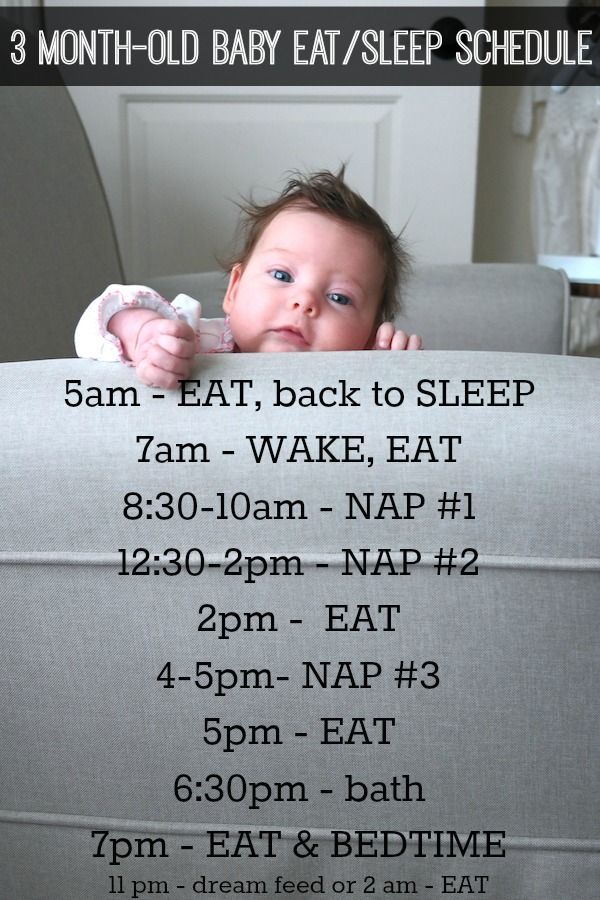 But if we bring scientific reasoning to a common denominator, then the conclusion suggests itself that complementary foods can be introduced from about six months, and for children with certain medical indications - from 3-5 months. Many experts believe that half a year is the ideal time for complementary foods, when the first colic is over, and the digestive system has matured enough to try new foods. The exact answer to the question of when to introduce complementary foods in a particular child can only be given by a pediatrician. In some situations, it may be necessary to introduce new dishes into the baby's diet as early as 4 months, and someone will be ready for this only after six months.
But if we bring scientific reasoning to a common denominator, then the conclusion suggests itself that complementary foods can be introduced from about six months, and for children with certain medical indications - from 3-5 months. Many experts believe that half a year is the ideal time for complementary foods, when the first colic is over, and the digestive system has matured enough to try new foods. The exact answer to the question of when to introduce complementary foods in a particular child can only be given by a pediatrician. In some situations, it may be necessary to introduce new dishes into the baby's diet as early as 4 months, and someone will be ready for this only after six months. What foods should I start introducing complementary foods with
Fruits, vegetables or cereals? Which of these foods are best for starting complementary foods? Experts have long answered this question as follows: if the baby is underweight, suffers from frequent loose stools, it is advisable to start with cereals (of course, gluten-free and dairy-free), and if everything is fine with weight, then vegetables will be the first in line.
 Also, vegetable complementary foods are recommended for breastfed children with constipation problems, rickets, or those born prematurely, whose weight is normal or exceeds the standards.
Also, vegetable complementary foods are recommended for breastfed children with constipation problems, rickets, or those born prematurely, whose weight is normal or exceeds the standards.
Why not fruit? Everything is simple. Fruits have a bright and sweet taste, and after trying an apple or banana first, the baby is likely to refuse zucchini or broccoli, which do not have the same rich taste. Therefore, the introduction of fruit purees and juices into the diet is postponed until vegetable purees become a familiar dish on the menu. As for cereals, buckwheat, rice and corn are first introduced, as they are characterized by the absence of gluten, saturate and are well digested.Read also: How to properly teach a child to different tastes
Avoiding mistakes
In order for the introduction of complementary foods not to become a test for either the baby or the mother, you need to follow some recommendations. Most importantly, be patient and don't get too upset if things don't go according to plan.
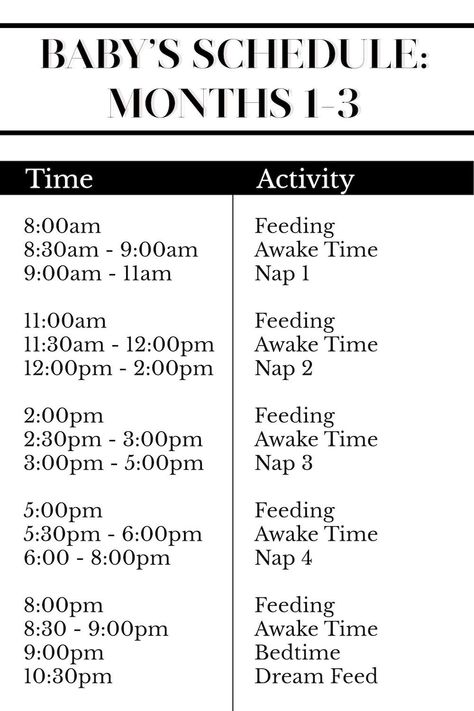 Each child is individual, as are their taste preferences and needs.
Each child is individual, as are their taste preferences and needs.
• Start complementary foods if the baby is perfectly healthy. Contraindications for the introduction of new products will be teething, colds, stress associated with separation or moving, recent or planned vaccinations.
• New foods are introduced gradually, starting with half a teaspoon. In the absence of allergies or digestive problems, the amount of the product is approximately doubled the next day. Sometimes the introduction of a new product stretches up to a week. Do not rush, give the child the opportunity to "taste" this dish. If the baby flatly refuses the offer, postpone the acquaintance for at least a week.
• Do not force your child to eat. After all, your goal is to introduce your child to new tastes and help develop good eating habits.
• The best time for the first feeding is after the morning feed until 12 noon, when the baby is already hungry and ready to eat something else. In case something goes wrong, you will know about it during the day, not at night.
• In the event of an adverse reaction to the product, such as an allergy, seek medical advice immediately. Then, in agreement with the doctor, offer this dish after a certain period of time.
• Gradually increase the amount recommended by your pediatrician. If you don't fit within a week, don't worry. Listen to your child and act accordingly.
• Always start feeding with complementary foods. Only then offer breast milk or formula.
• Stick to a 5-meal schedule. Feed your baby at the same time every day.
• Food offered to the baby must be thermally processed - boiled or steamed. The dish should be at a comfortable temperature - about 37 ° C.
• Purees and cereals should be of a liquid consistency so that a child who does not yet know how to chew can comfortably eat them. Thicker dishes with lumps and pieces are introduced into the diet by about a year, when there are already several teeth.
• Do not use salt, sugar or spices when preparing complementary foods. Also, do not add them in order to force the child to eat something. Let the baby get used to natural tastes.
Also, do not add them in order to force the child to eat something. Let the baby get used to natural tastes.
• Complementary foods are prepared at one time and should never be refrigerated until the next meal. Everything should be only the first freshness.
• If you prefer ready-made baby food, carefully study the top manufacturers, pay special attention to the shelf life when buying.When introducing complementary foods, be guided by the data in the tables, which indicate which products, in what quantity and in what months experts recommend giving. 6 months
7 months
8 months
9 months
10 months
11 months
12 months
0068
180 g
200 g
200 g
Porridge
50–100 g
150 g
068
180 g
180 g
180 g
200 g
200 g
fruit
60 g
70 g
80 g
100 g
100 g
100 g
meat
50 g
60 g
60 g 9000
70 g
70 g
70 g
Cottage cheese
9000
068
10-30 g
30 g
40 g
50 g
50 g
Zhelki
1/4
1/4
1/2
1/2
1/2
Fish
9000
30 g
50 g
60 g
Vegetable
1 ml
3-5 ml
5 ml
5 ml
5 ml
9 Sl.

1 ml
3-5 ml
5 ml
5 ml
9006 8 months
9 months
10 months
11 months
12 months
Silent porridge
10–150 g
150–180 g
150–180 g
180–200 g 9000 g 9000 g 9000 g 9000 g 9000 g 9000 g 9000 g 9000 g 9000 g 9000 g
068
200 g
200 g
200 g
Vegetables
10–120 g
80–120 g
9000 9000 9000 9000 9000 9000 9000 9000 9000073
150 g
170 g
180 g
200 g
200 g
Military0007
-
-
-
-
-
-
160–200 ml
Fruits
5–60 g
50-60 g
60 g 9000 g 9000 g 900–100 g 900-100 G0007
100–120 g
100–120 g
100–120 g
meat
-
10-30 g
30–70 g
60–70 g
60–70 g
9000 9000
9007 9007 9007 9007 9ATH0119 Cottage cheese -
-
5–10 g
40 g
40 g
50 g
yolk
-
-
½
½
½
½ --1
fish
-
-
-
10–40 g
10–40 g
50–60 g
9 vegetable oil
-
-
1 ml
3-5 ml
5 ml
5 ml
5 ml
Cream oil
-
-
1-3 g
3-4 g
5 g
5 g
5 g
, as you can see, the schemes for the introduction of pectoral and artificial feeding are not too much.
 In any case, starting to introduce new foods into the baby's diet, you will have to give the baby milk or formula for a long time, which are still the basis of his nutrition.
In any case, starting to introduce new foods into the baby's diet, you will have to give the baby milk or formula for a long time, which are still the basis of his nutrition. How to introduce solid foods by month
3 months
If your doctor advises your breastfeeding or formula-fed baby to introduce complementary foods at 3 months, start with what the specialist has recommended to you. If these are vegetables, start with the classic - zucchini puree. This vegetable contains many beneficial nutrients and fiber. Start with half a teaspoon, carefully observing the reaction of the child's body. Be sure to supplement your baby with breast milk or formula afterwards. In case the child does not like the zucchini, try giving broccoli or cauliflower. Well, if the doctor advised porridge, feel free to choose buckwheat or corn.
4-5 months
After your baby has tasted zucchini, broccoli and cauliflower, it's time to add other vegetables: carrots, potatoes, green peas.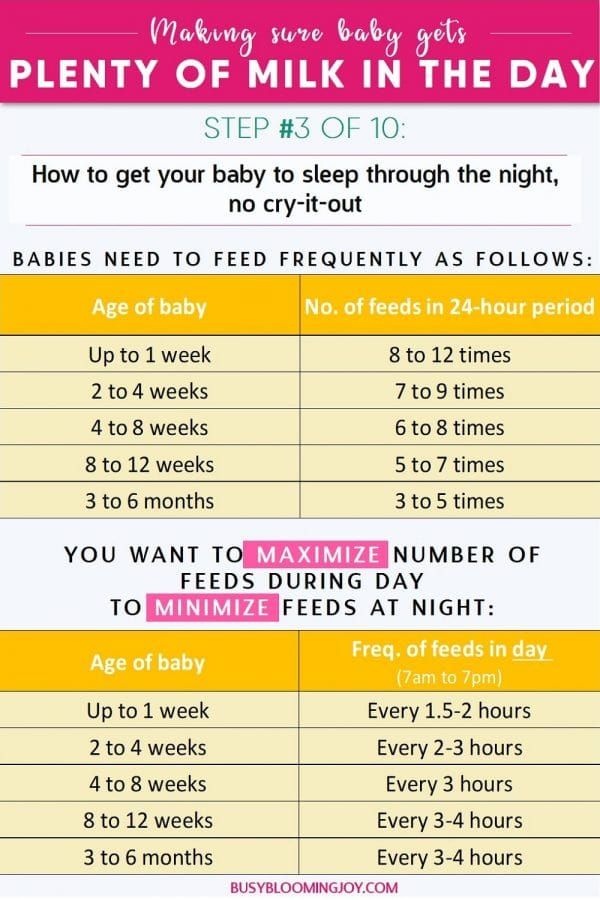 Do not overdo it with carrots, give it no more than 2 times a week. It is even better if this root crop is combined with other vegetables. It's porridge time! Gluten-free, water-cooked buckwheat, rice or corn. If the baby refuses to eat such cereals, add some breast milk or the usual mixture to them.
Do not overdo it with carrots, give it no more than 2 times a week. It is even better if this root crop is combined with other vegetables. It's porridge time! Gluten-free, water-cooked buckwheat, rice or corn. If the baby refuses to eat such cereals, add some breast milk or the usual mixture to them.
6 months
Time to pamper your baby with dried fruit compote, and formula-fed children start giving milk porridge. You can use a milk mixture to prepare such cereals, and in some cases, milk diluted with water. But in general, pediatricians do not advise introducing cow's milk into a child's diet before 8 months, as this can cause allergic reactions.
7 months
After the baby gets used to vegetable purees, you can try to give fruit purees and, if desired, juices, which should be diluted with water. There has been a lot of negative talk about juice lately. There is no fiber in them, but there are a lot of acids, which may not be completely safe for the stomach and have a high sugar content. So consult a pediatrician and think carefully about whether to give the baby juices or still prefer mashed potatoes and compotes. An excellent alternative to juices is children's herbal teas. Start introducing your baby to fruits with apples (preferably green varieties), bananas, and pears. The baby's menu is replenished with a new product - meat. Rabbit meat, turkey meat are best suited. Chicken and veal are also considered a good option. Low-fat pulp without streaks is taken. It is boiled or brought to readiness for a couple, then crushed in a blender or meat grinder. Meat with a gradual increase in its quantity is given as part of vegetable purees. Also at 7 months, it's time to give the baby a pumpkin.
So consult a pediatrician and think carefully about whether to give the baby juices or still prefer mashed potatoes and compotes. An excellent alternative to juices is children's herbal teas. Start introducing your baby to fruits with apples (preferably green varieties), bananas, and pears. The baby's menu is replenished with a new product - meat. Rabbit meat, turkey meat are best suited. Chicken and veal are also considered a good option. Low-fat pulp without streaks is taken. It is boiled or brought to readiness for a couple, then crushed in a blender or meat grinder. Meat with a gradual increase in its quantity is given as part of vegetable purees. Also at 7 months, it's time to give the baby a pumpkin.
8 months
An important moment in the introduction of complementary foods during artificial and breastfeeding occurs exactly at 8 months. It's time to give the baby a yolk. Watch the reaction of the body very carefully: if there are any manifestations of allergies. In case of a negative reaction of the body to chicken yolk, exclude it from the menu and try quail. It is best to give this product in the morning feeding from 9 to 11 hours. Along with vegetable and butter, gluten cereals are also introduced: oatmeal, millet, barley, pearl barley. It's time to give your child a taste of light vegetable soups. The components of the dish should be familiar to the child. Do not experiment by introducing dishes into the diet even with one unknown ingredient. Meatballs, boiled or steamed, are added to the meat in the form of mashed potatoes.
In case of a negative reaction of the body to chicken yolk, exclude it from the menu and try quail. It is best to give this product in the morning feeding from 9 to 11 hours. Along with vegetable and butter, gluten cereals are also introduced: oatmeal, millet, barley, pearl barley. It's time to give your child a taste of light vegetable soups. The components of the dish should be familiar to the child. Do not experiment by introducing dishes into the diet even with one unknown ingredient. Meatballs, boiled or steamed, are added to the meat in the form of mashed potatoes.
9 months
At this age, the baby should be introduced to the diet of low-fat fish: pollock, hake, perch, cod. For these purposes, fillets are taken and steamed, stewed or boiled. For the first time, fish are given in very small quantities. Start with once a week, gradually increasing to two. Remember that either fish or meat is given on the same day, without mixing these 2 products. If at the age of 8 months there were no prunes on the menu of the child, it's time to fix it. Dried fruit compote is also an excellent option, which at first is best diluted with water. However, you definitely shouldn’t get carried away with dried apricots, it’s better to wait until the baby reaches the age of one.
Dried fruit compote is also an excellent option, which at first is best diluted with water. However, you definitely shouldn’t get carried away with dried apricots, it’s better to wait until the baby reaches the age of one.
Months 10–12
The diet characteristic of this period is characterized by an increase in portions to their maximum values indicated in the scheme. Also, it is at this age that the last feeding is gradually replaced by milk or kefir.Now that you've come across a set of essential tips, you're ready to start weaning. Once again, consult with a specialist, be patient, not forgetting to listen to the baby's body. We are confident that you will succeed. The main thing here, as in any other business, is a positive attitude. It all depends on you and your desire to raise a healthy and happy baby with competent eating behavior. Don't stop if you fail and don't get frustrated if things don't go according to plan. Everything will definitely work out.

#Feeding children up to one year old #Complementary foods
Complementary feeding scheme | Nutriclub
Regardless of whether your child is receiving breast milk or infant formula, at about six months of age, according to WHO* recommendations, the first complementary foods should be introduced. But where to start feeding? And how to do it right? Let's talk in order.
It is at the age of 6 months that the baby's body responds best to new foods. The first complementary foods in combination with breast milk should provide the child with all the useful substances necessary for his growth and development. Also, the timely introduction of complementary foods contributes to the development of the chewing skills of the baby. Russian pediatric practice also allows for earlier introduction of complementary foods - from 4-5 months **.
How many months to introduce complementary foods?
To know when it's time to consider introducing food other than milk or formula, watch for signs of complementary feeding.
 It's time to start complementary foods if:
It's time to start complementary foods if: - The baby sits with support, does not roll over on its side
- The child shows food interest: follows the spoon with his eyes when you eat, tries to steal something from your plate
- Ejection reflex faded, child opens mouth when offered food
Consult your paediatrician before introducing complementary foods. And in order to introduce complementary foods correctly, read the complementary feeding scheme below.
Rules for the introduction of complementary foods
- All new products are introduced with ½ teaspoon and then gradually adjusted to the age norm.
- New products are best given in the morning or afternoon to be able to track the reaction throughout the day.
- Do not introduce a new product until the previous one has been brought to the age norm.
- Complementary foods are offered before feeding with breast milk or its substitute.
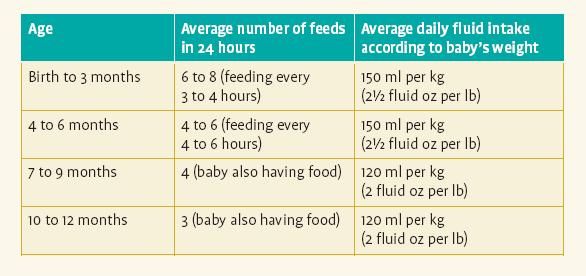
- Until the volume of the product per feeding is brought to the age norm, you should continue to supplement the baby with breast milk or infant formula. Thus, the volume of the complementary food product will gradually increase, and the volume of milk or formula, on the contrary, will decrease until it completely disappears.
Complementary feeding scheme
Age Foods and portion sizes 4-5 months Complementary foods at this early age should be introduced if the child is not gaining weight well or is at risk of developing iron deficiency anemia. Complementary foods are introduced to healthy children from 5 months. There are a number of contraindications for an early start of complementary foods, consult your pediatrician!
What foods can we start with:
- Vegetable puree
- Dairy-free cereals.

6 months What foods should be in the baby's diet if you introduced complementary foods at 5 months:
- Dairy-free cereals - up to 150 g
- Vegetable puree - up to 150 g
What new foods are introduced into the diet:
- Meat puree - up to 30 g
- Vegetable oil - up to 1 tsp.
- Fruit puree - up to 60 g
7 months What foods should be in the baby's diet by the end of the 7th month: - Porridge - 150 g.
- Vegetable puree - 170g
- Meat Puree - 30g
- Fruit puree - 70g
- Vegetable oil - 1 tsp
What new foods are introduced into the diet:
- Butter - up to ½ tsp.
- Boiled egg yolk - up to ¼ pc.
- Fruit juice - 70 ml.
- Baby biscuits - 1-2 pieces
8 months What foods should be in the baby's diet by the end of the 7th month:
- Porridge - 180 g.

- Vegetable puree - 170g
- Meat Puree - 50g
- Fruit puree - up to 80 g.
- Vegetable oil - ½ tsp.
- Butter - ½ tsp.
- Boiled egg yolk - ½ pc.
- Fruit juice up to 70 ml.
- Baby biscuits 1-2 pcs.
What new foods are introduced into the diet:
- Baby kefir or yoghurt - up to 100 ml, as an alternative to breast milk or formula in one of the feedings
9-12 months What foods should be in the diet of a child at this age:
- Porridge for breakfast and/or dinner*
- Vegetable puree - for lunch and/or dinner
- Meat puree - about 50 g.
- Fruit puree - for afternoon tea and/or breakfast
- Vegetable oil - ½ tsp.
- Butter - 1 tsp.
- Boiled egg yolk - ½ pc.
- Fruit juice and/or compote up to 100 ml.
- Baby biscuits - up to 2 pcs.
- Baby kefir or yoghurt up to 200 ml.
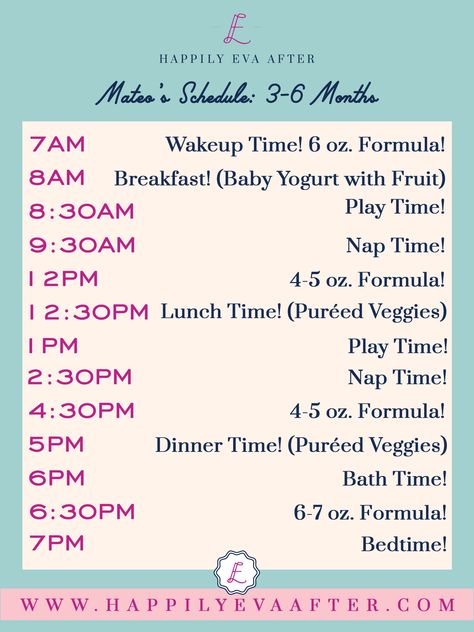
What new foods are introduced into the diet:
- Meatballs or fish (as an alternative to mashed meat) - 50 g
- Bread or croutons - 10 g
- Curd - 50-70 g; as an alternative to 100 ml of kefir or yogurt in one of the feedings
After 9-12 months volumes of previously introduced products will continue to increase, but remember that the older the child, the more pronounced the individual characteristics, therefore, the food needs of children at this age may differ.
Focus on your baby's weight gain, appetite, and your own common sense.
If you think your child is malnourished or is not gaining weight well, consult a pediatrician.
When using any materials from the site nutriclub.ru, a link to the site is required.
© Nutriclub, 2020You will also be interested
- Learn more
- Baby food mango combinations

- Baby spit up 3 times after feeding

- How much to feed baby rabbits

- How to burp the baby after feeding

- Nuk baby food maker recipes

- When will my baby go longer between feeds

- Can you reuse baby food

- When is it safe to feed baby food
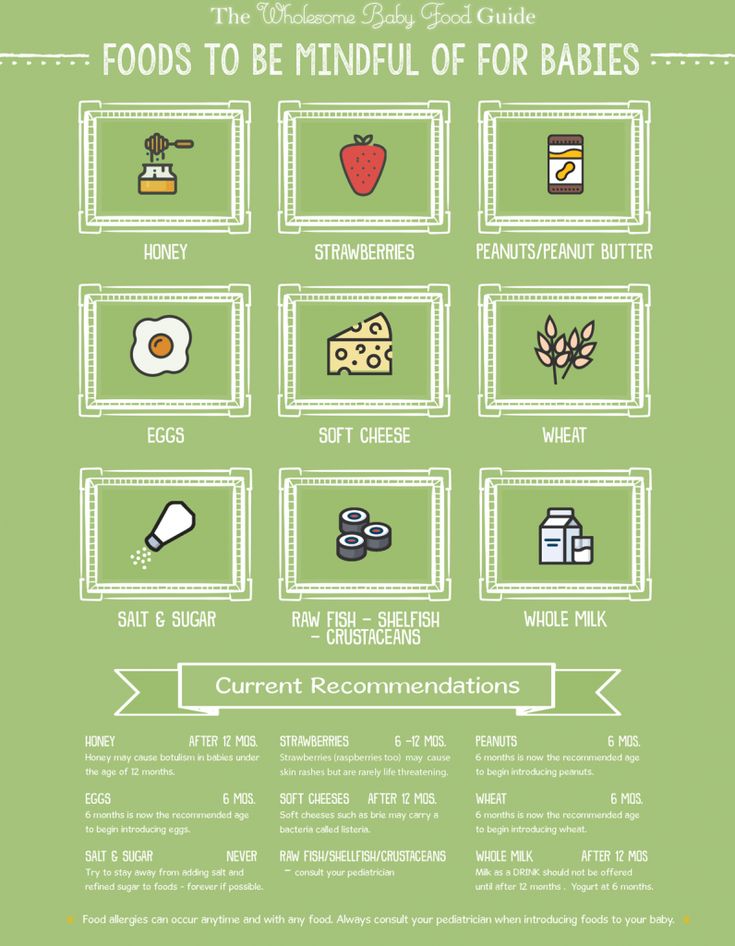
- Baby 2nd foods age

- Foods to avoid when breastfeeding baby

- Feed a baby mockingbird

